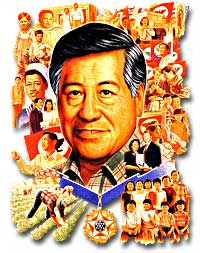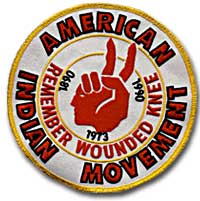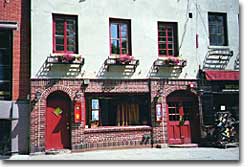57f. Others Demand Equality

Cesar Chavez used tactics similar to those used by Martin Luther King, Jr. in his attempts to improve working conditions for migrant farm workers in the American Southwest. Hunger strikes and boycotts — combined with his creation of the United Farm Workers union — brought much needed change.
The 1960s broadened the traditional definition of civil rights, as the politics of identity exploded in the United States. As African Americans and women demanded much needed reforms, other groups who felt on the margins of American society organized as well. The climate was conducive to change, and many felt the need to seize the moment. Latino Americans, Native Americans, and gay Americans demanded fair treatment and inclusion under the banner of civil rights.
Mexican Americans, or Chicanos, were steadily growing in population in the American Southwest throughout the twentieth century. In 1965, Cesar Chavez led a strike on behalf of the migrant farm workers in California. Chavez used the strategies of Martin Luther King to reach his goals of higher pay and better working conditions. In addition to the strike, he organized the United Farm Workers union and enacted a nationwide boycott of grapes to support his cause. Responding to the mistreatment of union membership in the fields, Chavez commenced a three-week hunger strike to receive national attention. When the grape growers recognized his union in 1970, his deeds were vindicated.

The American Indian Movement grabbed America's attention through brash stunts. One such action was the seizure of Alcatraz Island and the subsequent offer to the U.S. government to buy back the land for the same small sum that settlers offered to Native Americans for Manhattan Island in 1626.
Not all Mexican American activism followed King's approach. A group known as the Brown Berets, who modeled themselves after the Black Panthers, strove to take control of the streets of Chicano neighborhoods. They battled the Immigration and Naturalization Service, and chanted "Brown Power" in the same spirit that Stokely Carmichael chanted "Black Power."
As politics became more radicalized, a "Red Power" movement emerged in Native American communities. In urban Native American ghettoes across the Midwest, the American Indian Movement (AIM) took shape. Members of AIM were tired of working through a system they believed was the primary reason many Native Americans lived in dire poverty. They chose attention-grabbing stunts as the means to draw attention to their cause.
In 1969, members of AIM seized Alcatraz Island in San Francisco Bay. AIM members offered the United States government the equivalent amount of trinkets that Peter Minuit paid to the inhabitants of Manhattan Island in 1626. For 18 months the occupation forces held firm. In 1972, AIM protesters occupied the Bureau of Indian Affairs building in Washington, DC. The final battle of the war for the Great Plains was re-enacted in 1973 when members of AIM seized Wounded Knee in South Dakota. After a 71 day holdout, the siege collapsed.

In June 1969, New York City police raided the Stonewall Inn for operating without a liquor license. Hundreds of homosexual patrons — feeling the Inn had been singled out because of its homosexual clientele — reacted with riots and protests that lasted several days.
Identity politics flared among homosexual Americans as well. The catalyst for the gay rights movement came when New York City police officers raided the Stonewall Inn in May 1969. The patrons of the bar felt singled out for police harassment for years, but this time they fought back, hurling rocks, fists, and insults at the police. On the one year anniversary of the Stonewall Riot, the first gay rights parade was staged in New York City. Although many legal rights and protections such as marriage for gay Americans remained out of reach into the twenty-first century, small gains were achieved in the years that followed Stonewall. In 1974, the American Psychiatric Association officially removed homosexuality from its list of mental illnesses. By the mid-1970s, the FBI no longer considered homosexuals a security risk, and gays were no longer denied civil service jobs based on their sexual orientation.
Although the fight for societal acceptance rages on, the many civil rights movements were born in the cauldron of the protest movements of the turbulent 1960s.






